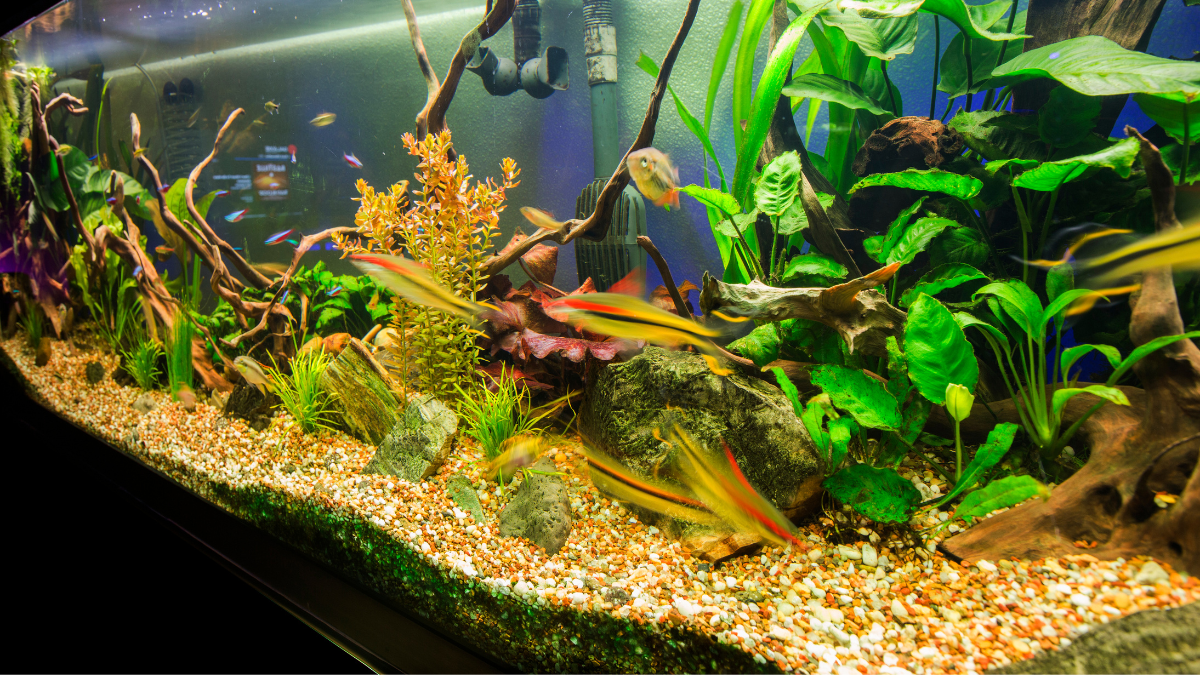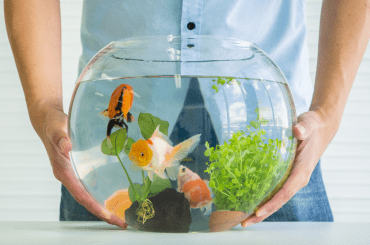Aquarium Substrates play an important role in a healthy and eye-catching aquarium. So when you’re researching to start your first aquarium, you will come to the point of What aquarium substrate should I use in my aquarium.
Here we’re going through the pros & cons of aquarium substrates that will help you to decide which aquarium substrate should put in your fish tank.
What are the types of Aquarium Substrates?
The Aquarium substrates or the stuff you put on your aquarium’s floor might sound like a simple decision. But there’s a lot more. Because different materials have different effects on the water quality, fish habitats, fish tank health, and the look of your fish tank.
Let’s start with the simplest of all substrates, and that’s no substrate.
Bare bottom tanks
You might think an aquarium with no substrate would be the easiest to take care of. Yes, It’s easier to take care of because you don’t have to vacuum it out when you’re doing your maintenance, but bare bottom tanks have a couple of downsides.
The first is algae. Algae is gonna grow in your fish tank at some point. Even the most meticulous fish keepers are gonna get algae from time to time. Some would even say it’s a sign of a healthy aquarium. Yes, that’s correct, But you’d be surprised how well substrate will cover up algae on the bottom of the tank.
Next is fish poop. Yes, your fish is gonna poop, and it’s gonna go somewhere. It doesn’t always make it into the filter. Substrate does a great job of letting the poop fall between it and gets lost out of sight.
This would be why when you see people vacuum out their substrate, all that nasty brown stuff comes up through the tube.
Gravel

Gravel is the most common aquarium substrate in the fish-keeping hobby. It’s easy to find, easy to maintain, pretty cheap, and looks good.
Gravel comes in a bunch of different colors and sizes, from the larger natural colors that look like river rocks to the smaller gravel chips that might not look as natural but have a really good look.
Pea-sized gravel is the standard and mostly used aquarium gravel type. It’s heavy and easy to vacuum as they do not kick up easily or be sucked in your filter.
Pea gravel also comes in a crazy amount of artificial colors from the rainbow to jet black and natural colors from deep Browns to light beiges and everything in between.
It works very well to keep artificial plants anchored and can even be a good foothold for many live plants.
Gravel is great for countering the issues discussed in the bare bottom tanks, like algae accumulating on the bottom or fish poop settling down to the bottom. In addition, aquarium gravel provides surface area for the growth of beneficial bacteria.
As mentioned in the Ultimate Guide to Aquarium Nitrogen Cycle, There are bacteria that grow in your aquarium and help to maintain a healthy environment for your fish. This bacteria grows on surfaces.
So the more surface area you have in your aquarium, the more opportunity there is for the growth of this bacteria. These are all prime areas for beneficial bacteria to grow.
Aquarium Sand
Sand is a substrate that fish keepers either love or hate. There’s no doubt that it’s the most natural-looking substrate. But it’s definitely got its pros and cons. So, let’s go over each one.
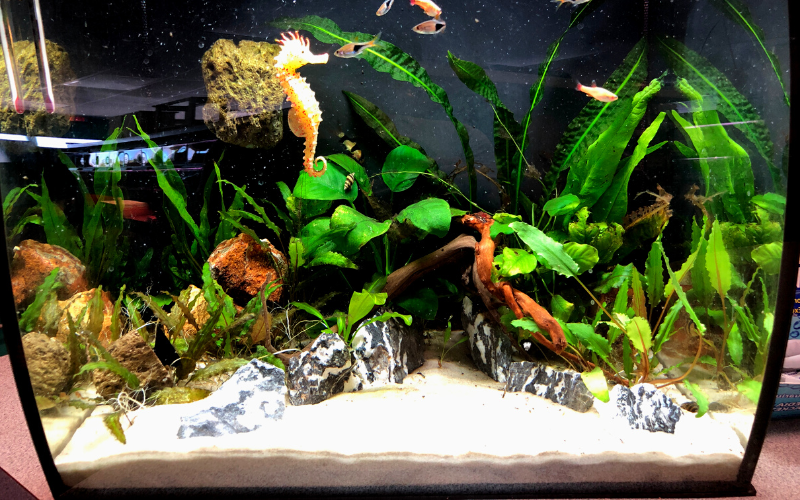
As mentioned, sand is the most natural-looking substrate in the Hobby. If nature is your thing and you’re trying to make your aquarium look like a little piece of nature, this is definitely the way you’re gonna want to go.
Sand is also an amazing bio media because it has all that surface area for beneficial bacteria. Actually, it’s even better than gravel in that regard.
There are several different types of sand. There’s crushed coral which will help to buffer your water and raise the pH, which is great for certain types of fish. But there’s also some super cheap sand that you can buy at Walmart.
Pool filter sand is a commonly used sand in the aquarium hobby. This is the kind of sand that actually made to put into a filter that will filter the swimming pools. But we use it in aquariums because it looks very natural and it’s dirt cheap.
Talking about the downsides of sand, some sand has very fine granules that can get blown around in your tank. That’s not a big deal unless it gets blown into your filter intake. If sand gets into your filter’s impeller, it can ruin it.
The next point is maintenance. Sand can be a little tricky to maintain because it’s so fine and can easily get sucked up into your siphon hose while you’re doing water changes.
Pelletized Soil for planted Aquariums
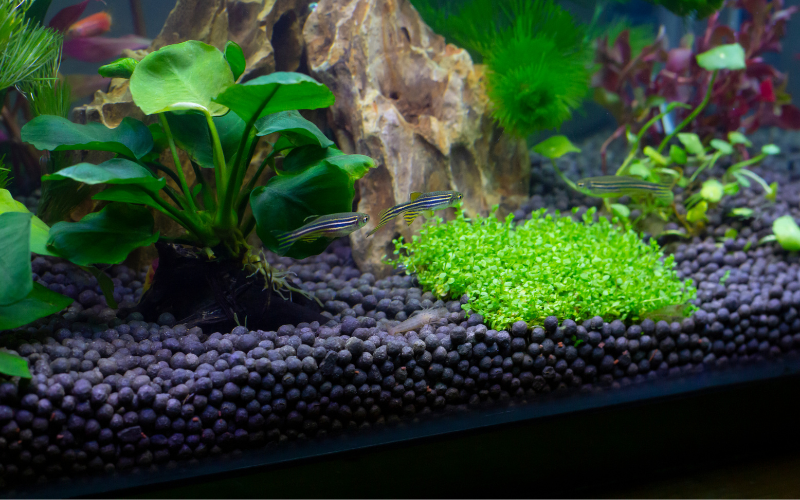
There are special aquarium substrates for planted aquariums. When you set up a planet aquarium, you have the opportunity to make an incredible little aquascape and mimic nature in almost any way you want.
With the rise in popularity of planted aquariums, there are many manufacturers that make special products for maintaining healthy plants. These substrates are basically dirt and packed with all kinds of nutrients and minerals that help the aquascape look natural and also help the plants to thrive.
But just like saying, these types of substrates come with challenges. They can be difficult in the beginning if you’re not careful filling them up, and they can be tricky to maintain because the material is so light.
Dirt Bottemed Aquariums
There are fish keepers out there that literally put dirt into their aquariums. Actually, it is a unique art that experienced fish keepers should test.
How do I choose the right Aquarium substrate?
Aquarium substrates come in many colors and textures. Also, they are made from different materials. So when picking up a suitable aquarium substrate, you have to consider several factors, such as the size of the substrate, color, fish habitats, and other specific factors to each substrate.
Particle Size of the Aquarium Substrates
The size of your substrate particles will affect how easy the fish tank is to maintain. When finer the substrate, it can be harder to keep it clean through siphoning or gravel vacuuming.
Coarser substrates like pea gravel are heavier, and they’re not gonna travel up the siphon tube and down the drain. So aquarium gravel is the easiest substrate to clean.
Color of the Aquarium Substrates
The colors of the aquarium substrates have a wide range, from artificial colors to natural soft colors. The substrate color should be selected according to the tank setup and the type of fish that you are gonna put.
If you need to set up a natural-looking aquarium, It’s better to use natural colors like black or white. Also, if you are willing to set up a fancy colored aquarium, there are specially colored substrates. But It’s better if you can stick to a natural aquarium substrate.
The common standard for selecting aquarium substrates is to use dark-colored substrates for light color fish and light-colored substrates for dark-colored fish. It makes your fish looks vibrant.
Inert Vs pH buffering substrates
Standard gravel, River stones, and Sand are called as inert substrates, which means that the materials they’re made from will not affect the pH of your aquarium. They are perfect for most of tropical community tanks.
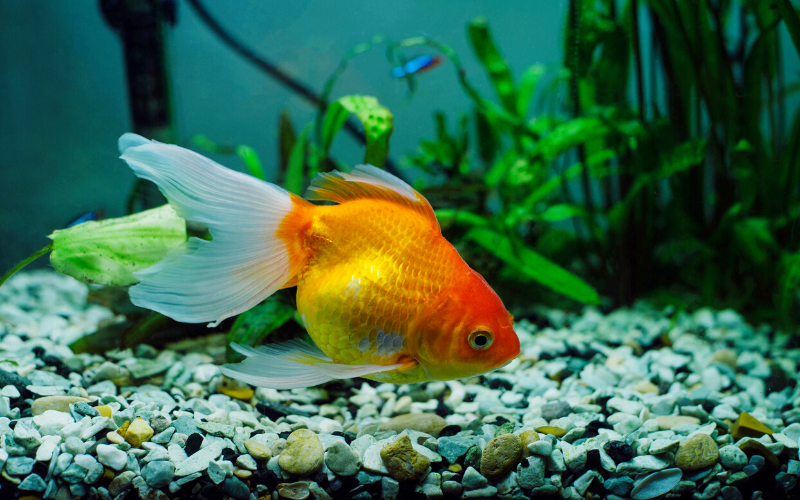
When it comes to saltwater aquariums or African cichlid tanks, a substrate that can help buffer your pH and keep it naturally higher can be a great benefit.
Saltwater aquariums usually aim for a pH between 8.2 and 8.4, and most saltwater substrates are made from crushed coral or aragonite, which can help to keep it there.
Although you can’t use saltwater substrates for African cichlids, you can also find a lot of African cichlids-specific substrates that usually mix gravels, crushed shells, limestone, and other materials like sand to make a more decorative or attractive substrate specific to them.
Fish Habitats
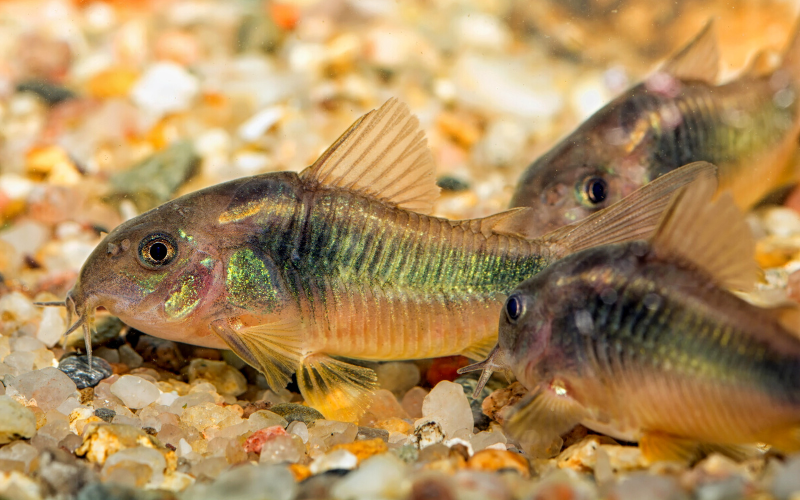
There are different types of fish in the aquarium hobby. Some fish varieties like stingrays, Cory Catfish, prefer to be in the bottom of the tank. They always stirre up the tank bottom for food.
So when selecting a substrate, those kind of fish should be specially considered . You should avoid substrates with sharp edges that can damage to those fish. In that case, you’ should sacrifice that ease of maintenance for what the fish is actually going to require.
What is the best aquarium Substrate for Beginners?
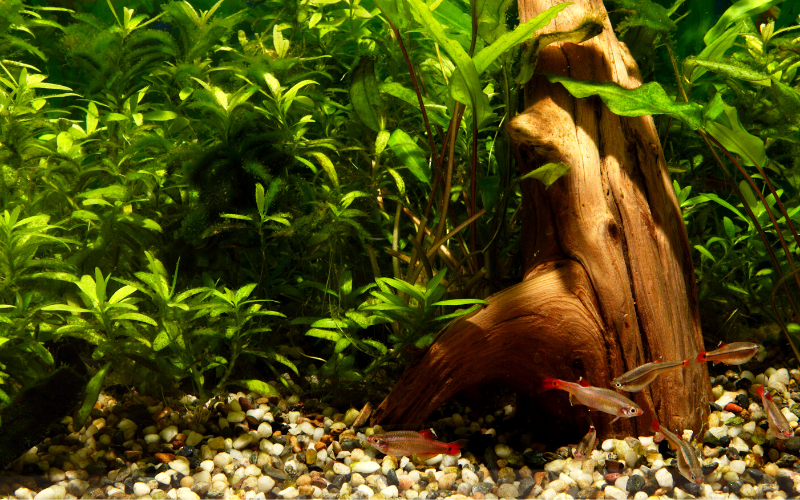
If you’re a beginner, when deciding what substrate to get in, you will want a nice substrate that is easy to install and maintain. Then the decision should be pretty easy. Aquarium gravel will be a good solution for newbies to the aquarium hobby.
Conclusion
So finally, Just understand that there’s no rulebook that says you have to use a certain substrate unless you’re gonna set up some advanced tank setup. So if you’re setting up your first tank, select a substrate that you like and something easy for you to install and maintain. If you need to know how to season and install your selected aquarium substrate, refer to our beginners’ guide to aquarium setup.

